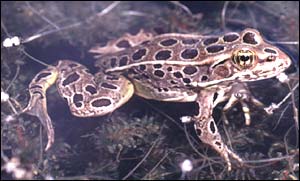BBC News
Thursday, 6 February, 2003, 00:00 GMT

Researchers in France have suggested that it may be linked to evolution and the fact that our ancient ancestors lived in the sea.
They believe it may be a throwback to a time when our ancestors had gills to help them breathe.
The reason why humans hiccup has baffled scientists for hundreds of years, not least because it does not seem to serve any useful purpose.
Sudden contractions
Hiccups are sudden contractions of the muscles used for breathing in.
Just after the muscles start to move, the glottis shuts off the windpipe to produce the characteristic "hic" sound.
Ultrasound scans show that two-month-old babies hiccup in the womb, before any breathing movements appear.
One theory is that the contractions prepare the unborn baby's respiratory muscles for breathing after birth.
Another is that they stop amniotic fluid entering the lungs.
But neither of these ideas fully stands up.
For instance, if hiccups were supposed to keep fluid out of the lungs, it would make more sense for them to involve a cough-like response, not a breath inwards.
This latest theory, originally published in the journal BioEssays and reported in New Scientist magazine, says the key to hiccupping lies in a group of animals for whom combining closure of the glottis and contraction of the "breathing in" muscles does serve a clear purpose.
They are the primitive air breathers, such as lungfish, gar and many amphibians that still possess gills.
These creatures push water across their gills by squeezing their mouth cavity while closing the glottis to stop water getting into their lungs.
A group of scientists led by Christian Straus, at Pitie-Saltpetriere Hospital in Paris believes the brain circuitry controlling gill ventilation has persisted into modern mammals, including humans.
The researchers point to many similarities between hiccupping and gill ventilation in animals such as tadpoles.
Both are inhibited when the lungs are inflated, for example, and by high carbon dioxide levels in air or water.
There must, however, be a reason why hiccupping persists 370 million years after animals started hauling themselves onto the land.
Suckling
Straus and his colleagues suspect the habit has been adapted to a new use - helping mammals learn to suckle.
The sequence of movements during suckling is similar to hiccupping, with the glottis closing to prevent milk entering the lungs.
Allan Pack, an expert in respiratory neurobiology at the University of Pennsylvania, said it was a plausible theory.
But he added: "It's going to be very tough to prove."
The real test will be to look at the specific areas of the brain that control hiccups and suckling, says Straus.
If the theory is correct, most of the nerves cells that are active during suckling should also fire during hiccupping.